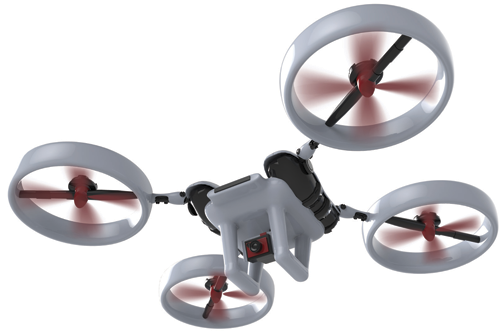
Top companies are always looking for a technological edge over their competitors. One burgeoning technology being incorporated into construction is the use of Unmanned Aircraft Systems (UAS), more commonly known as drones. As UAS use increases for quality assurance and project assessment, it is worth it for owners, builders and glaziers alike to consider the risks of their use.
According to a 2015 survey of owners, architects and contractors, product documentation, marketing and quality control are the biggest uses of UAS in construction. As UAS and digital imaging have increased in quality, economics often makes drone usage a more reasonable option to large project site surveillance. Moreover, UAS are certainly cheaper than scaffolding or swing stages for broad quality assessment. Owner-architects are also using UAS to evaluate project completion. Developers and general contractors are keeping track of trade-work while on a job, and then using UAS footage for marketing their next project.
Additionally, large-project glaziers report they are increasingly encountering UAS in the context of payment demands. Spot checks for quality on higher project floors are seeing UAS use as well. Glazing system manufacturers are venturing into UAS use during troubleshooting at jobs with alleged problems in order to get a broader picture of the structure as well as close-ups of particular installation exposures. Glaziers of many sizes are enjoying the vantage point a UAS permits for great marketing.
Common drone usage in construction:
- Project documentation
- Marketing
- Quality control
- Validation for payment
- High elevation spot checks
- Troubleshooting problems on site
Regardless of their use, there are risk factors to consider in relation to these systems. Drone use by an architect or builder is an item that should be on a glazier’s inquiry list going into a job. Understanding when and how UAS may be used on a project can help avoid later disputes. For example, accepting UAS as a validation tool for payment applications can lead to questions regarding specific survey locations and timing of drone inspections. The level of detail available from the drone, and conclusions that can be drawn should be considered in a glazier’s contract as well. The question of whether the results of a UAS inspection can, or must, be validated with an up-close inspection are important contractual considerations, as well as who is responsible for paying for that drone-required inspection.
It’s also important to understand current regulations. To no one’s surprise, the commercial use of UAS is heavily regulated by the federal government. The FAA recently released Part 107, a standard addressing “Operation and Certification of Small Unmanned Aircraft Systems.” Its purpose was to help clarify allowable, commercial UAS use. In summary, the FAA will permit commercial UAS operation if the drone weighs less than 55 pounds, is flown during daylight and remains both within the operator’s line-of-sight and below 400 feet. Other specific restrictions regarding particular operations are also included, for example, operations near airports. The penalties for failing to meet the FAA regulations are severe.
When glaziers step into UAS use themselves, the first issue is to ensure technical compliance with the new FAA permissive, commercial use regulations or obtain an exemption from the FAA (a “333 Exemption”). Even then, it will be important to review available insurance policy language to see if drone operations are potentially excluded from coverage as an “aircraft” so that a company is protected in the event of property damage or injuries resulting from UAS use. Flight compliance documentation is also key. No one is suggesting that UAS operators have to become airline pilots, but being able to establish that each UAS flight complies with the applicable requirements for operation is an important risk management step.
Beyond the operational issues, policy development for proper UAS use is essential. When beginning to use a UAS, a company should develop a written policy to establish permissive uses. Documenting the specific circumstances of use and compliance with FAA guidelines is essential. Moreover, individual states have unique laws addressing the right to privacy and trespass that drones can easily violate based on their flexibility of use and broad vantage point. Establishing controls to avoid these violations can help a company defend itself against these breach of privacy claims due to an errant drone.
The tool of drone technology is opening previously cost-prohibitive building evaluations to more companies. Some cautious forethought can help glaziers know what to ask and how to use these emerging technologies to their benefit.


